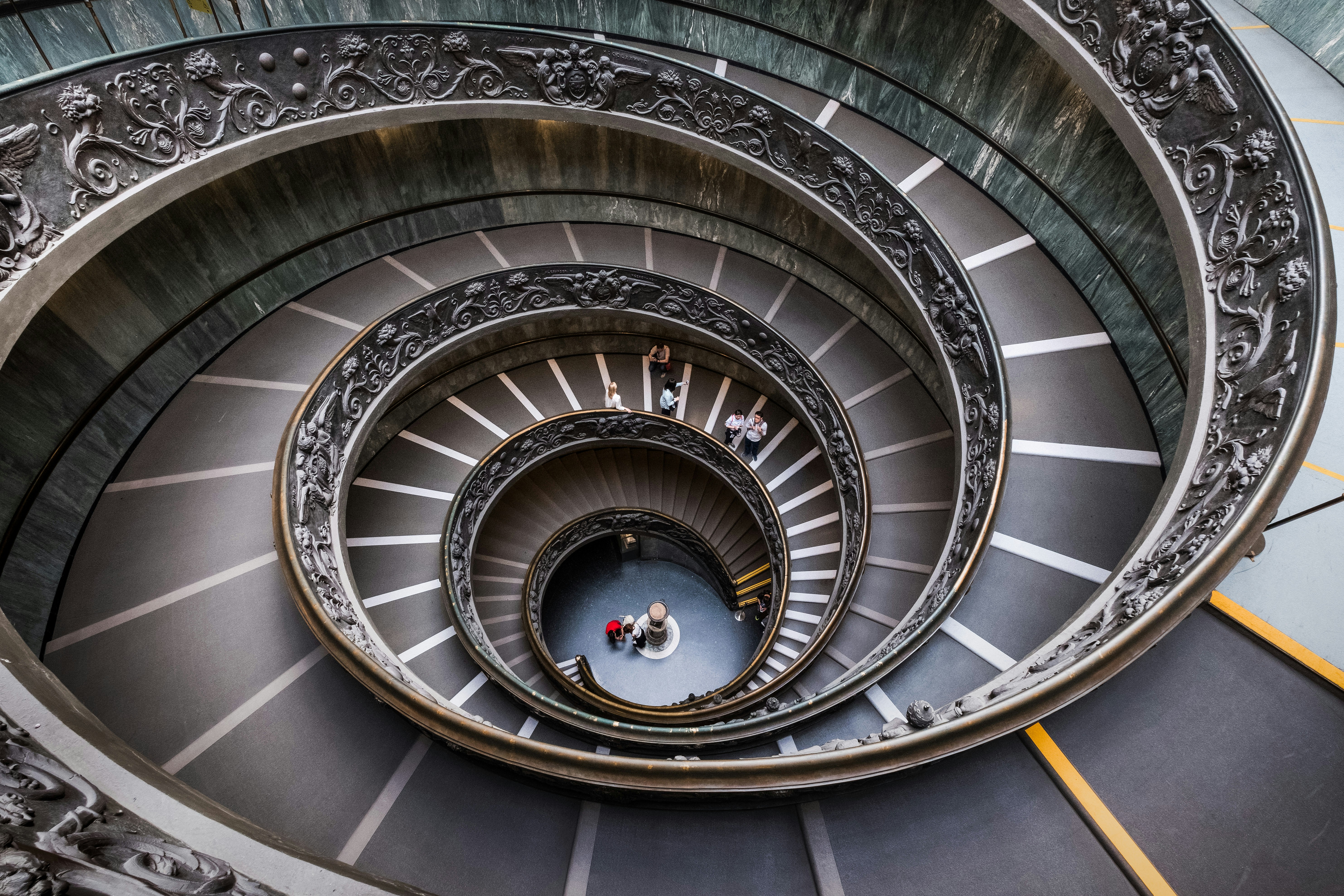When you use Great Photo Recipes links to buy products, the site may earn a commission.
What's The Recipe For This Great Photo?

Title: How to photograph L’escalier de Bramante est un escalier à double hélice des musées du Vatican. Attribué à tort à Donato Bramante, cet escalier fut dessiné par Giuseppe Momo en 1932, inspiré par un plus ancien effectivement dessiné par Bramante. Cet escalier est une double hélice, c’est-à-dire qu’il comporte deux escaliers, un pour monter, et un pour descendre. Ainsi personne ne se croise en sens inverse. Assemblage dans Photoshop de 5 photos (pour supprimer un maximum de personnes) prises à main levée (trépied interdit) au Fujifilm X-T2 et XF 10-24mm à 10mm, f/9.0, 1/40s et 1600 ISO.; aerial view of spiral stairway building
Credits: Nicolas Hoizey, source, license.
symmetry and lines. Frame the shot to include interesting details and textures. Adjust settings for clarity and perspective.
• aperture: 9 • exposure time: 1/40 • focal length: 10.0 • ISO: 1600
High-end camera gear can be beneficial, but it's not essential. You can use equipment similar to
FUJIFILM X-T2, that was used for the original photo. Or use any compatible camera.
From RAW to JPEG
Post-processing is indispensable for transforming raw pixels into
captivating, impactful photographs, enriching their storytelling and aesthetic allure.
Tools like
darktable (open-source) or
Lightroom
(commercial)
facilitate adjustments in
brightness,
contrast, and
color,
which
enhances visual appeal, corrects imperfections, and enables creative expression while optimizing photos for various outputs such as prints or social media.
Post-processing isn't a dark art for pro artists or geeks; it's a vital requirement for every image, regardless of its subject or content.